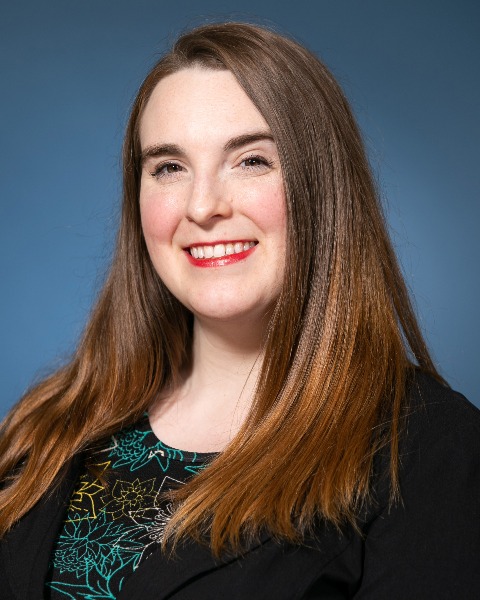Anatomy Lab Practice Posters
Poster: Anatomy Lab Practice Posters
74 - Green Body Donation: The Umass Chan Experience
Saturday, March 23, 2024
5:00pm - 7:00pm US EDT
Location: Sheraton Hall
Poster Board Number: 74
There are separate poster presentation times for odd and even posters.
Odd poster #s – first hour
Even poster #s – second hour
Co-authors:
There are separate poster presentation times for odd and even posters.
Odd poster #s – first hour
Even poster #s – second hour
Co-authors:
Dalilah-Rain Gilmartin - AGP Lab Specialist, Radiology, University of Massachusetts Chan Medical School; Phillis Lefave - AGP Lab Specialist, Radiology, University of Massachusetts Chan Medical School

Amanda J. Collins, MPH
Director, Anatomical Services
UMass Chan Medical School
Worcester, Massachusetts, United States
Presenting Author(s)
Abstract Body : Intro & Objective: The use of toxic and harmful chemicals and carbon emissions from practices such as cremation, body donation and medical education have created an unsafe and risky environment for medical students and lab staff. The Anatomical Gift Program (AGP) at UMass Chan Medical School began seeking alternatives to formaldehyde-based preservation, and cremation. Thoughtful exploration resulted in the creation of “green” donation pathways, allowing donors and their families to maintain their chosen values and attain environmentally conscious end-of-life care.
Materials & Methods: A certified, non-toxic, ethanol based embalming chemical, GreenMBalm, distributed by Green Solutions Group, was tested in the UMass Chan preservation labs to determine feasibility of replacing our previously used formaldehyde-based chemicals. Additionally, composting vessels were set up, and natural organic reduction was tested to as an alternative to cremation.
Results: UMass Chan has a long history of engaging our local communities. The deviation away from formaldehyde was initiated by AGP staff to improve the exposure risks in the anatomy lab. Additionally, our local community has been clamoring for greener and sustainable donation options, which until now, was not possible. In conjunction with the change to ethanol, we implemented a natural organic reduction, or human composting, protocol. Robust community outreach was conducted to inform the public of our eco-healing options. In the 6 months after introducing this option, 11.38% of registrations have specified the green donation pathway.
Conclusion: Introducing green options has set the AGP at UMass Chan apart from other local institutions. The implementation of GreenMBalm has had further positive outcomes, including improved lab conditions, ease of dissection, and allows for a high-fidelity clinical simulation in the anatomy lab, with the donors. As our offerings continue to expand, the AGP has further integrated into the medical and basic science curriculum in our university system. We also introduced resident groups and procedures into the graduate medical curriculum that were previously out of reach.
Significance/Implication: A shift to green donation options not only improves the health and safety of lab workers and users, but it also provides an opportunity for AGPs to engage with their community. In a time when many programs are facing a donor shortage, we have doubled our donor census and have elevated the AGP’s standing within the institution and the community. We are honored to listen to our donor families and continue to strive for safer, eco-healing practices in body donation.
Materials & Methods: A certified, non-toxic, ethanol based embalming chemical, GreenMBalm, distributed by Green Solutions Group, was tested in the UMass Chan preservation labs to determine feasibility of replacing our previously used formaldehyde-based chemicals. Additionally, composting vessels were set up, and natural organic reduction was tested to as an alternative to cremation.
Results: UMass Chan has a long history of engaging our local communities. The deviation away from formaldehyde was initiated by AGP staff to improve the exposure risks in the anatomy lab. Additionally, our local community has been clamoring for greener and sustainable donation options, which until now, was not possible. In conjunction with the change to ethanol, we implemented a natural organic reduction, or human composting, protocol. Robust community outreach was conducted to inform the public of our eco-healing options. In the 6 months after introducing this option, 11.38% of registrations have specified the green donation pathway.
Conclusion: Introducing green options has set the AGP at UMass Chan apart from other local institutions. The implementation of GreenMBalm has had further positive outcomes, including improved lab conditions, ease of dissection, and allows for a high-fidelity clinical simulation in the anatomy lab, with the donors. As our offerings continue to expand, the AGP has further integrated into the medical and basic science curriculum in our university system. We also introduced resident groups and procedures into the graduate medical curriculum that were previously out of reach.
Significance/Implication: A shift to green donation options not only improves the health and safety of lab workers and users, but it also provides an opportunity for AGPs to engage with their community. In a time when many programs are facing a donor shortage, we have doubled our donor census and have elevated the AGP’s standing within the institution and the community. We are honored to listen to our donor families and continue to strive for safer, eco-healing practices in body donation.

